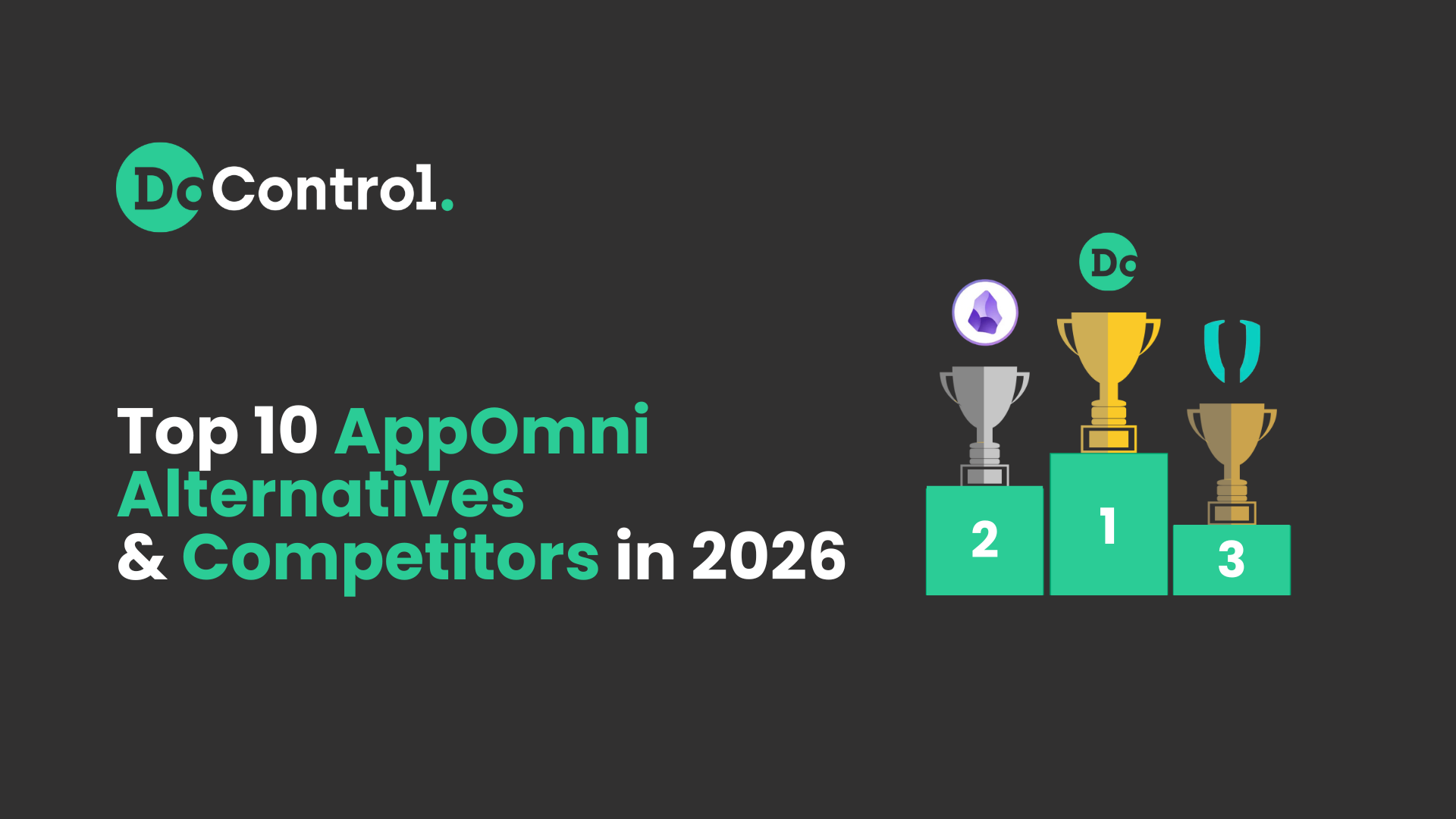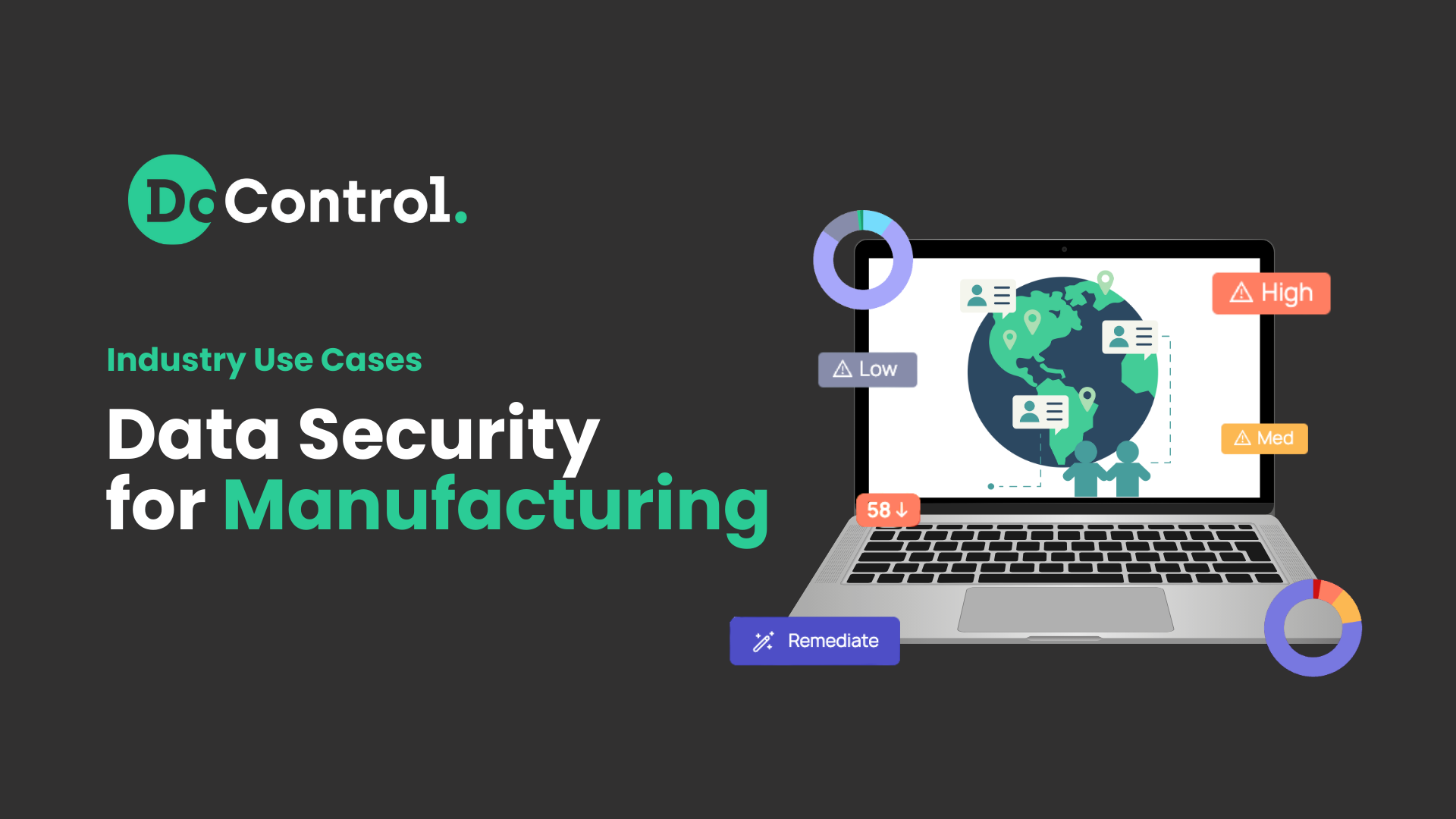
AppOmni has established itself as a category leader in the SaaS security and posture management space, earning recognition for its deep visibility, integration support, and strong compliance capabilities. They initially made their mark on the market through an initial focus on Salesforce - then, they expanded into other SaaS apps.
AppOmni is an API-based SaaS Security Posture Management (SSPM) platform that helps organizations understand and protect their SaaS environments. They deliver great SaaS configuration and posture controls, giving enterprises deep visibility into how their apps are configured and secured.
Its platform helps security teams continuously monitor for misconfigurations, excessive permissions, and risky integrations, making it a trusted tool for large organizations managing complex SaaS ecosystems.
Another key advantage for AppOmni is its extensive integration list. The platform connects natively with major SaaS providers such as Salesforce, Microsoft 365, and ServiceNow, allowing enterprises to standardize SaaS security and compliance across their most business-critical applications.
Finally, AppOmni has built a strong reputation in the enterprise market. Its focus on large-scale deployments, compliance readiness, and posture management has made it a go-to choice for regulated industries that need consistent oversight of their SaaS environment.
However, while AppOmni provides solid posture management and integration coverage, there are several areas where organizations may find its capabilities limited.
- Limited visibility into user activity and data flow → AppOmni focuses primarily on configurations and permissions, but doesn’t provide granular insight into how users interact with or share data within SaaS apps - creating potential blind spots for insider risk or data exposure.
- Lacks detection and response capabilities →The platform identifies misconfigurations and risks, but doesn’t extend into real-time detection or response workflows. This limits its ability to help teams actively contain or remediate SaaS threats as they occur.
- No remediation for exposed data → AppOmni flags risks, but leaves the remediation process to security teams. Without automated or guided remediation for exposed data, organizations can struggle to resolve findings at scale or close the loop efficiently - often resulting in alert fatigue, manual, time-consuming processes, and resource strain as security teams chase down (hopefully legitimate) threats one by one.
As a result, while AppOmni remains a strong fit for posture management and compliance monitoring at the enterprise level, many organizations pair it with or migrate to solutions that deliver deeper data visibility, automated remediation, and real-time SaaS threat response to achieve more holistic protection.
It's important to note that when it comes to SSPMs and data security, one solution isn’t going to solve ALL of your company's needs. The market is fragmented, and one solution or vendor won’t be the silver bullet to solving the SaaS security problem in 2026.
In the following sections, we’ll explore the top 10 AppOmni alternatives and competitors that help organizations secure their SaaS environments with context, precision, and scalability.
1) DoControl
DoControl provides a comprehensive, context-rich approach to SaaS DLP and SaaS Security, delivering deep coverage across all five pillars. It excels in Data Access Governance, DLP, Shadow AI, and ITDR, making it a strong fit for organizations looking to reduce sensitive data exposure with precision and scale.
Focus Area(s): DLP, Data Access Governance, Shadow Apps, Shadow AI, ITDR
Top Customers: Colgate-Palmolive, Snap Inc., Databricks, Sanmina, Datadog
Pros:
- Contextual visibility combining SaaS data, user behavior from HRIS/IdP systems, and advanced content scanning.
- Granular and scalable remediation for both historical and real-time exposure through flexible, automated workflows.
- Real-time, scalable data architecture designed for large enterprise environments.
Cons:
- Misconfiguration coverage is growing but currently limited.
- Compliance framework support is still expanding.
- No browser extension analysis within the Shadow AI/Apps module.
2) Obsidian Security
Obsidian fuses posture management with analytics. Obsidian merges SSPM with UEBA (User & Entity Behavior Analytics) to detect threats within SaaS platforms. It acts as a security intelligence layer, especially around insider risk.
Focus Area(s): Misconfigurations, Shadow Apps, Insider Risk Management
Top Customers: Seagate, Databricks, PureStorage, Upwork, Snowflake
Pros:
- Effective insider threat detection via UEBA
- Solid misconfiguration detection across a wide app range
- Behavioral visibility across accounts and apps
Cons:
- Limited remediation capabilities
- Weak data inventory and shadow app insights
- Less focus on posture/configuration enforcement
3) Adaptive Shield (Crowdstrike)
Adaptive Shield is an SSPM with wide connector coverage and straightforward deployment for posture hygiene across many SaaS apps. Acquired by CrowdStrike, Adaptive Shield offers SSPM capabilities with a strong emphasis on compliance, app hardening, and posture analysis.
Focus Area(s): Broad SSPM, Misconfigurations
Top Customers: Unavailable online
Pros:
- Broad SaaS configuration management
- Seamlessly integrates with the CrowdStrike XDR ecosystem
- Robust compliance reporting features
Cons:
- Limited ITDR or behavior analytics
- Development slowed post-acquisition
- Redundancy if not already invested in CrowdStrike
4) Netskope
Netskope is an SSE (Security Service Edge) platform offering CASB, DLP, and ZTNA capabilities. It delivers holistic protection across SaaS, IaaS, and web environments.
Focus Area(s): DLP
Top Customers: JLL, Republic Services, BLG, Orbia, Culture Amp
Pros:
- Full SSE suite: CASB, SWG, DLP, ZTNA
- Real-time traffic inspection and threat protection
- Strong coverage for both managed and unmanaged SaaS apps
Cons:
- High setup and tuning complexity
- No contextual user data; higher false-positive rate
- Pull-based architecture limits scalability for large datasets
5) Zscaler
Zscaler’s “advanced SSPM” is offered as part of the Zero-Trust Exchange, with continuous monitoring and auto/guided remediation. It enters the conversation for SaaS access security when discussing governance, who can reach what, and how that data is inspected.
Focus Area(s): Zero Trust access, inline traffic inspection, threat prevention
Top Customers: Protegrity, MGM Resorts International, Micron Technology, Amplifon
Pros:
- Robust inline controls, session security, and policy enforcement at scale.
- Complements app-level posture tools with access-layer protections.
- Strength in global footprint and enterprise-grade operations.
Cons:
- Not a replacement for app-native configuration hardening or data governance.
- Needs careful integration with IdP and app-level tooling.
- Policy design is crucial to avoid friction for developers and business users.
6) Grip Security
Grip focuses on shadow SaaS discovery and visibility into unmanaged app usage, helping security teams regain control over SaaS sprawl and app proliferation.
Focus Area(s): Shadow IT
Top Customers: NFP, PDS Health, IPG, Believer, Endor Labs
Pros:
- Strong discovery of shadow and unmanaged SaaS
- Agentless, lightweight deployment
- Rapid SaaS inventory creation
Cons:
- No analysis or remediation for sensitive data exposure
- Lacks deep configuration management
- Minimal to no ITDR capabilities
7) Reco AI
Reco.ai has grown rapidly due to its strong Misconfiguration capabilities and custom app support. While it's early in other areas, it has carved a niche around secure app configurations.
Focus Area(s): Misconfigurations, ITDR
Top Customers: Wellstar Health System, BigID, CSK, Ruby Life, BHG Financial
Pros:
- Broad app support for Misconfiguration coverage
- Automated custom app onboarding
- Behavior-based risk scoring
Cons:
- No remediation capabilities
- Limited feature set outside Misconfigurations
- No DLP, DAG, or Shadow AI capabilities
8) Valence Security
Valence addresses SaaS supply chain risks by focusing on non-human access, third-party integrations, and inter-app connectivity.
Focus Area(s): Misconfigurations, Shadow Apps
Top Customers: Corelight, Riskified, Hippo, UTA, Goosehead Insurance
Pros:
- Strong mapping of app misconfigurations
- Deep visibility into OAuth tokens and Shadow App usage
- Effective for SaaS-to-SaaS and API security
Cons:
- No behavior analytics or ITDR support
- Limited exposure and data risk insights
- No remediation for data exposure
9) Spin.ai
Spin.ai emphasizes backup, ransomware recovery, and app risk for SaaS platforms like Google Workspace and M365. It's uniquely positioned as a SaaS resilience and recovery tool.
Focus Area(s): Backup and recovery, Shadow IT
Top Customers: Toronto Metropolitan University, SADA, General Catalyst, GroupHugs, Cider
Pros:
- Built-in ransomware recovery and backup
- Strong third-party app and Chrome extension visibility
- Useful for business continuity use cases
Cons:
- Limited posture and configuration management
- Not focused on SSPM or threat detection
- Less suited for broader SaaS security operations
10) Wing Security
Wing Security is a rising player in the SaaS security and SSPM space, offering visibility, posture management, and identity threat detection in SaaS environments.
Focus Area(s): SSPM, ITDR, Shadow IT
Top Customers: Fiverr, Genomics, Next47
Pros:
- Provides broad SaaS-stack visibility
- Remediation capabilities around identity access management and third-party apps
- Expanding GenAI risk management capabilities
Cons:
- Limited breadth in large-scale global enterprise deployments
- Remediation capabilities less mature compared to bigger players
- Less suited for broader SaaS security operations for larger enterprises
Conclusion
While AppOmni delivers real value in helping organizations monitor SaaS configurations and strengthen posture management, its limited visibility into user activity, data flows, and limited remediation capabilities cause companies to seek out other vendors to replace or compliment its efforts.
Modern SaaS security extends far beyond configuration monitoring. It requires a strong DLP approach and continuous oversight of data access, contextual user activity, third party applications, GenAI shadow apps, and identity threats - areas that demand automation, real-time response, and contextual intelligence.
As with any fragmented and evolving landscape, there’s no single vendor that perfectly solves every aspect of SaaS and data security.
Each platform brings a unique balance of visibility, coverage, and operational depth. Success often comes from layering best-of-breed solutions that work together to fill gaps and deliver complete protection.
The goal isn’t to find the one “perfect” tool, but rather, a trusted partner that grows with your organization’s maturity and adapts to the ever-changing SaaS threat landscape.
DoControl embodies that philosophy.
With unified coverage across data access governance, SaaS DLP, shadow apps and AI, identity threat detection and response (ITDR), and automated remediation, DoControl gives security teams full context, control, and continuous protection - all in one platform!
For organizations looking to move beyond visibility to true SaaS data security, DoControl stands apart as the scalable, context-driven solution built for today’s challenges and tomorrow’s threats.



